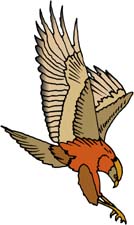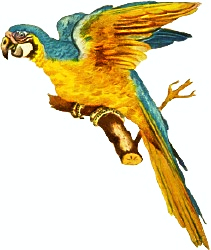CSC 453 Term Project
This page describes the term project.
enjoy… yow, bill Executive Summary
Your mission will be to perform systems
analysis tasks to propose a solution to some information
system problem.
Here are some of the parameters (basically, the ones I can think of right now):
Have fun, put in the time, and grab your “A” off the tree. Postscript… our teams are: canary thanks… yow, bill
Teams
Our teams are set. I am creating a page
on the wiki for each team. I don't exactly know why… it may
work better than the k: drive… how's that?
Our four teams are:
go team sparrow… yow, bill
Schedule and Grading
Obviously, we're running a little
behind schedule… how realistic!
As I said, I'm the system owner. Each of the five system analysis steps ends with communicating your progress to the terrible executroids above. So, it shall be with out little simulation. You will present your documents and findings to me. Here's a tentative schedule, with the points to accompany each step:
Change: phase 4 to 5 points, from 10… phase 5 to 20 points, from 15. The 15 points allocated to phase 5 includes my grade/analysis of your final report, your week 10 presentation, and how the whole project went in general. Please email me at each due date with the location of your deliverables. If you have to deliver hand-written documents or diagrams, that's fine… just let me know. As system owner, I may ask your team to present your findings at any step for myself and a number of my closest consultant buddies… basically, present for the class. This is “code” for I'd like each team to present at least once for the class… we'll see how our schedule goes. quoth the raven… yow, bill
Phase 0: Select a Problem/Customer
We are hip deep in phase 0. Most teams
only have to conduct their interview. There are two
deliverables:
BTW, here are the project choices for each team:
Excellent! The purpose of this phase is to select a problem and customer combination, so that we can start our little simulation here. The deliverables of this phase include:
The due date for this phase is Sunday October 28. grilled puffin yum… yow, bill
Phase 1: Scope Definition
Please read about this phase in our
text. [pages 167-174]
The purpose of this phase is to accomplish two primary things:
The deliverables of this phase include:
Reality Check - Remember that the schedule and budget projections are for the project development, not the analysis you are doing. Make sense? So, your schedule may stretch into 2008 or beyond. I know that phase contains a lot of hand-waving for our class. Please use your creativity and have fun with it. There will be no presentation at the end of this phase. The due date for this phase is Sunday October 28. Email me so that I know where to find all your work. bald eagle… yow, bill
Phase 2: Problem Analysis
Please read about this phase in our
text. [pages 174-184]
The purpose of this phase is to, well, let me quote the book… “The goal of the problem analysis phase is to study and understand the problem domain well enough to thoroughly analyze its problems, opportunities, and constraints.” Sounds good enough. Understanding the “problem domain” also includes understanding the current system that address the problem being studied. We run into two problems doing this within the confines of our little simulation:
So, you will see a lot of shortcuts in this phase, and it shouldn't take much time to complete. We'll spend our money in the next phase where we start describing our solution(s) to the problem at hand. The deliverables include:
Reality Check - I do not need two things that the book emphasizes:
The due date for this phase is Sunday November 4. dodo bird… yow, bill
Phase 3: Requirements Analysis
Please read about this phase in the
text. [pages 185-189]
The purpose of this phase is to describe your use cases. OK, it's more than that, but that's the biggie. As we know, your use cases will be used as a basis for future data models and process models to describe your system in detail. Officially, the requirements phase answers the question: What do the users want and need from a new system? The deliverables for this phase include:
Reality Check - Spend you time and money on your use cases. Have I said that enough? For example, I shouldn't look at your use cases and see obvious additional scenarios that you guys haven't flushed out. This is one place in our simulation that you can really be thorough, and it's also important for you to do so. Another example of a bad thing to do… have a bunch of terms that I can't understand and can't find in your data dictionary. The due date is Sunday November 4, 2007. soaring hawk… yow, bill
Phase 4: Logical Design
Please read about Phase 4 in our text.
[pages 189-192]
For us, the purpose of Phase 4 is to construct our system models. These models describe in detail our proposed system. The deliverables for this phase include:
Reality Check - Of course, this phase is tremendously important and is the cornerstone of your project. Spend your money here, guys. In this phase, it is also key to distribute your work across members of your team. Please draw your diagrams by hand, review them in your team, and then finally use CASE tools to produce your final, polished diagrams. The due date is Sunday November 11. macaw macaw… yow, bill
Phase 5: Decision Analysis
Note: Almost all of
this changed on Tuesday Nov 13 per our discussion in lecture
the night before.
Phase 5 will put a nice bow on all your project work. The primary deliverable for phase 5 is your SYSTEM PROPOSAL. Our SYSTEM PROPOSAL will be different from that shown in our text. We'll be focusing more on the technical aspects, rather than the feasibility, alternative solutions, etc approach. We brainstormed a candidate outline on the board in Monday's lecture. It's still worth reading the textbook's discussion of this stuff [pages 431-433]. There's some good general advice in there. Once you've got your SYSTEM PROPOSAL done, you've got to do a few things with it:
The drop-dead due date for phase 5 is Saturday Nov 17 at noon. I cannot extend this deadline as the end of the term is near. holy robin batman… yow, bill
|








